
Ahead of the 2020 Summer Olympics, which eventually got delayed to 2021, it was announced that breakdancing would be included in the list of sports that would earn medals at the Olympic Games in 2024. The decision was branded a ‘mockery’ by squash great Michelle Martin, who didn’t understand how breakdancing could be added to the Olympic roster before her own sport was able to earn a medal.
It’s not the only questionable sport that squash has lost out to in a bid to be included in a list of sports considered worthy of contention by the International Olympic Committee. The likes of BMX racing, skateboarding and wushu have all been awarded medals before squash has been named an Olympic sport. Breakdancing is far from the only unusual sport to be added to the IOC’s list, however, so here’s a look at some others.
How a Sport Joins the Olympic Roster
Before we start looking at the specific list of odd sports that have been part of the Olympics over the years, it’s worth considering how a sport gets added to the Olympic roster in the first place. Since the first Modern Olympics took place in 1896, the amount of competitors that take part in the Games has been expanded from 241 to more than 10,000, largely thanks to the number of sports added.
Since 1980 alone, as many as 100 events have been added to the Olympic Games, with advocates of others pushing for them to be added too. The first thing that happens when a sport is going to be added to the Olympics is that it is recognised as a sport at all by the IOC. Part of this includes the event in question having administration by an international non-governmental organisation.
International Sports Federation
Once the sport has been officially recognised, it gains International Sports Federation status, at which point the governing body needs to enforce the Olympic Movement Anti-Doping Code. That includes carrying out regular tests, even outside of competition periods, as well as the implementation of the Olympic Charter. Just because a sport has been recognised, however, doesn’t guarantee its appearance in the Olympics.
The sports’ International Federation will need to apply for admittance to the Olympic Games, filing a petition to the IOC that demonstrates that it meets all eligibility criteria. At this point, a sport may be admitted into the Olympic program as either a sport, a discipline or a an event. After a petition has been presented, there are numerous things that will decide if it will be included in a future Olympic Games.
The Olympic Charter
The Olympic Charter dictates that a sport must be practiced in at least 75 countries, on four continents, all by men. It must also be practiced in 40 countries and three continents by women. Another key factor is that it will increase the ‘value and appeal’ of the Olympic Games, as well as ‘retain and reflect’ the modern traditions of the Olympics. There are also rules on what sports can’t be to be part of the Olympics.
Both chess and automobile racing have been kept out of the Olympics on account of the fact that ‘mind sports’ and those that depend on ‘mechanical propulsion’ won’t be recognised. It has become something of a modern phenomenon for the IOC to only include a new sport when another one is discontinued. This includes a periodic review of sports that have historically been part of the program.
Both media and public interest in sports will be considered by the IOC when weighing up the chance of a sport being added to the Olympic program. In other words, a sport can meet all of the necessary criteria but not become on Olympic sport because it just isn’t seen as being popular enough. The ability to accommodate sports in venues is also taken into consideration by the IOC.
Looking at Weird Sports from the Olympics Over the Years
Because of the nature of the Olympics and the manner in which the International Olympic Committee is constantly reviewing which sports are included on its program, there have been weird sports that have taken place in the past that are no longer ones you can watch. Here’s a look at some of the standout ones that would be included in that list.
Plunge for Distance
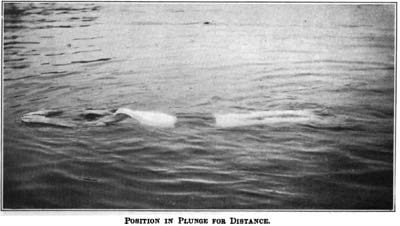
Imagine a cross between long jump and swimming and you’ll be in the right sort of ball park for this sport. It was included in the 1900 Olympic Games in Paris, with competitors having to dive into the pool before remaining still for 60 seconds or until their head broke the surface of the water. The competitor that glided for the longest distance was declared to be the winner.
Despite the sport meeting the IOC’s criteria, only five people entered to take part in the event. The eventual winner was William Dickey, who travelled approximately 62.5 feet. In what might strike you as the least surprising Olympic news of all time, 1900 was the only iteration of the Games to date that featured plunge for distance as a competitive sport and it’s unlikely it will be seen again.
Roque
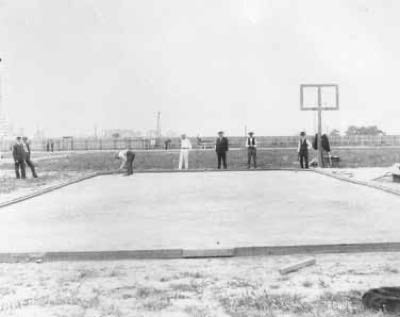
In the early years of the modern Olympic Games, the rules on new sports weren’t quite as stringent as they are nowadays. Olympic Games’ organisers would decide which sports to include, which is how roque was added to the list for the Games in 1904. A sport that was virtually unknown outside of the United States of America, it was only Americans that took part in it when the Games were held in St. Louis, Missouri.
The sport itself was akin to croquet, which had been included in the Games in 1900 but disappeared from the program. The big difference was that it was played on a hard surface, rather than grass, and included a solid boundary wall. Obviously, an American won, which let to accusations from many that the USA was trying to inflate its medal count by including it in the first place.
Running Deer Shooting
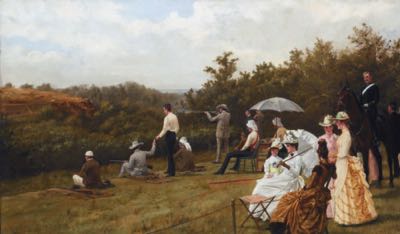
We could have included live pigeon shooting, which took place at the Games in 1900 and involved the deaths of real live pigeons, but we decided to keep it PG-rated. No actual live deer were involved in this sport, with the animals instead being represented by cutouts that had thee concentric circles on them as targets. They moved quickly past the competitors, who stood about 100 metres away.
The sport was introduced in 1908 during the London Games and continued for numerous years afterwards. It was perhaps most notable for the gold medal won by Swede, Oscar Swahn. He won the medal on his debut in the Games when he was 60-years-old, becoming the oldest gold medallist in Olympic history. He continued taking part, winning a silver medal in 1920 at the age of 72.
Solo Synchronised Swimming
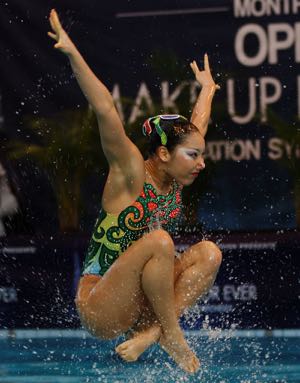
The idea of solo swimming makes sense, perhaps pitting competitors against the clock. Synchronised swimming is also easy enough to understand, with teams being judged on their ability to stay in synch with each other. What really doesn’t make much sense, though, is when you put those two hands together. It was introduced in 1984, which was, perhaps coincidentally, the height of cocaine usage.
Instead of needing to synchronise with other swimmers, the solo synchronised swimmer had to synchronise their movements with music. The competitor needed to ensure that their movements were synchronised perfectly, being judged accordingly. Remarkably, it was considered successful enough to mean that it also took place in 1988 and 1992 before then being scrapped for good.
Obstacle Swim
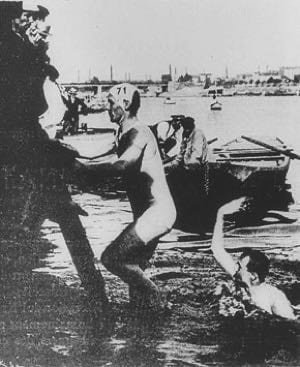
Quite whether swimmers have been overly affected by the chlorine in the water and that’s why there’s so many mad swimming sports in the Olympics is something for someone else to judge. Regardless, it has to be said that obstacle swim actually sounds quite fun. It was another of the weird sports that took place during the 1900 Olympic Games in Paris and was held in the River Seine.
Competitors were required to climb over obstacles such as poles and boats, also needing to swim under certain obstacles during the 200-metre course. Austrian, Otto Wahle, finished in the silver medal position, beaten to gold by Australian Frederick Lane by just two seconds. Though it was discontinued almost immediately, there’s something about the idea of watching modern swimmers climbing over boats that is intriguing.
Pistol Duelling

You might infer from the title of pistol duelling as a sport that it involved two people shooting at each other. Sadly, such a thing was reserved for the wild west or the musical Hamilton, with the Olympic sport actually seeing athletes fire at stuffed dummies. That’s not to say that we’d actually like to have seen people getting shot, of course, but a duel between to people definitely sounds fun.
It was introduced to the Olympics during the intercalated Games of 1906, being repeated during the Stockholm games of 1912. The mannequins used in pistol duelling had targets painted on them, with points awarded according to where they were shot. It was done over two distances: 20-metres and 30-metres, with Leon Moreaux winning gold for France over 20 metres and Konstantinos Skarlatos managing it over 30 for Greece.
Rope Climb
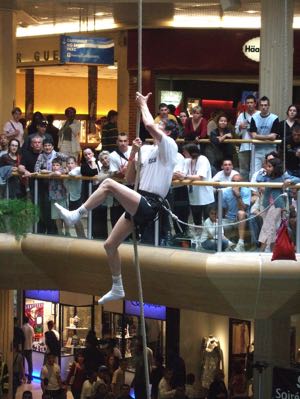
Anyone who has ever seen a teen movie in which an unfit kid suddenly becomes the master of something or another will doubtless have a good idea what rope climb involves. It often features in films in which someone needs to prove themselves, having made its Olympic debut in Athens in 1896. Competitors were required to shimmy up ropes that were around 46-feet in length, being judged on both time and style.
Nikolaos Andriakopoulos won the first ever gold in the competition for Greece, with the sport continuing until after the 1932 Summer Olympics in Los Angeles. As the sport developed, the idea of judging competitors on their style in the rope climb was abandoned. In the end it came down to how quickly a climber could reach the top of their rope, irrespective of what they looked like which they were doing it.
Race Walking
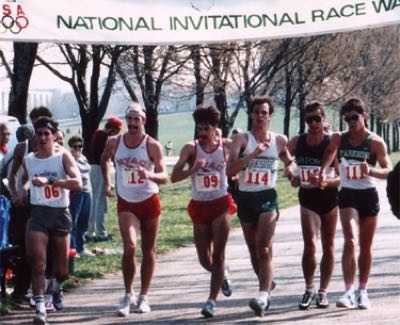
The idea of walking quickly seems somewhat anachronistic, especially in a time of some of the fastest runners ever to exist. It differs from running, however, insomuch as one foot needs to be in contact with the ground at all times. On top of that, the standing leg must be straightened at the knee when the foot makes contact with the ground, with race judges assessing whether this has happened or not.
During the Summer Olympics, race walking is done over 20 kilometres for men and women and 50 kilometres for men alone. They are road events and debuted during the St. Louis Games of 1904, having emerged from the British activity of ‘pedestrianism’. Russian and Chinese athletes have tended to dominate the sport since the mid-20th century, with the cadence of the competitor being the most important aspect of the sport.
Roller Hockey

Imagine ice hockey but played indoors and on roller skates instead of ice skates; you’ve just imagined roller hockey. The event got its debut during the Barcelona Olympics of 1992, lasting for just one summer only. Though it is still a sport that is played, it’s not one that the IOC is likely to bring back any time soon. If only there was some disco music and a darkened room, the temptation might be too much to resist.
Argentina won the gold medal when the event took place as a demonstration sport in Barcelona, with Spain earning silver and bronze going to Italy. Twelve different nations entered a team for a total of 120 athletes, with the sport split into group stages and then a knockout round. There are actually different variations of roller hockey, with the one featured in Barcelona being of the quad variety.